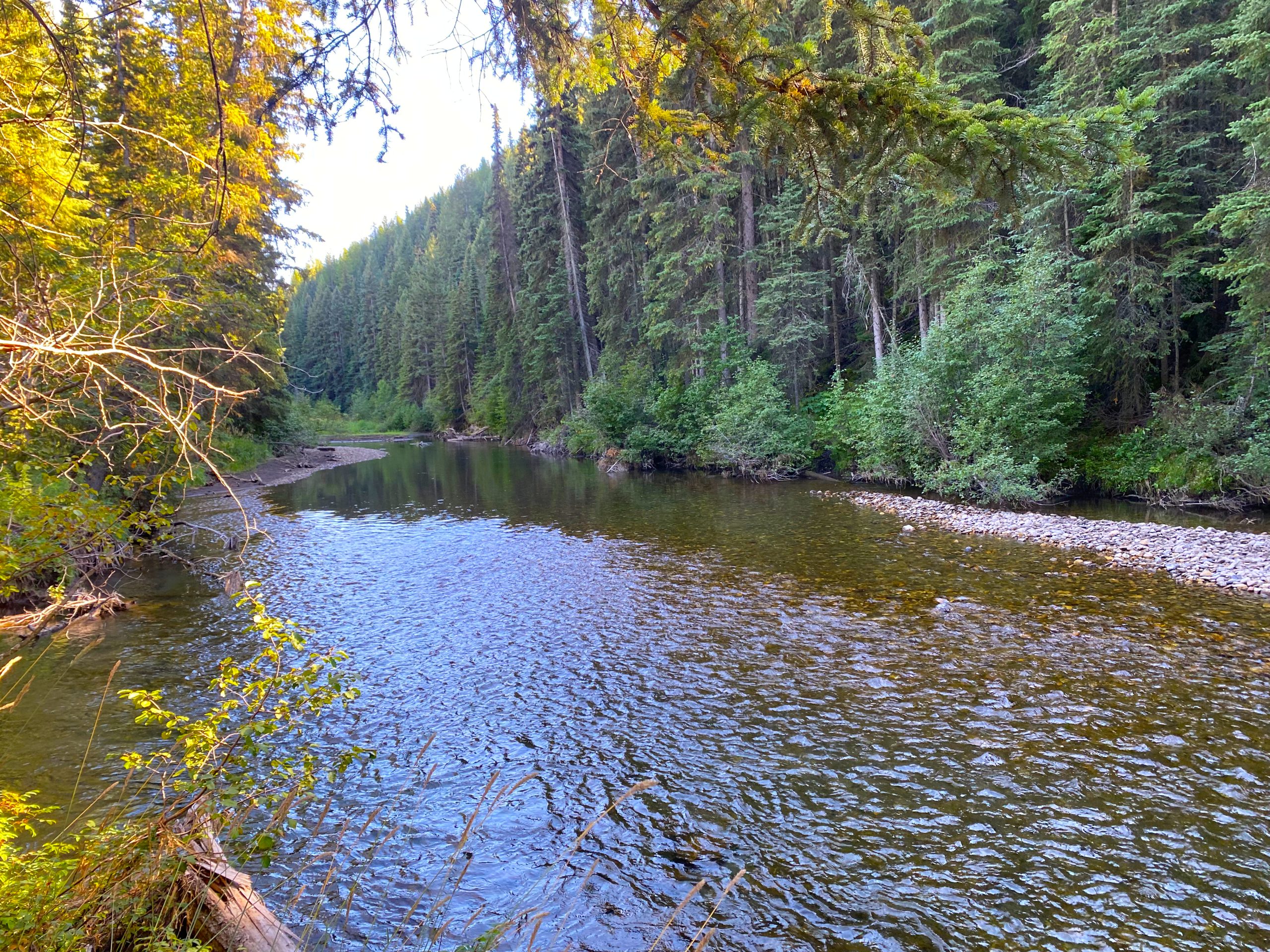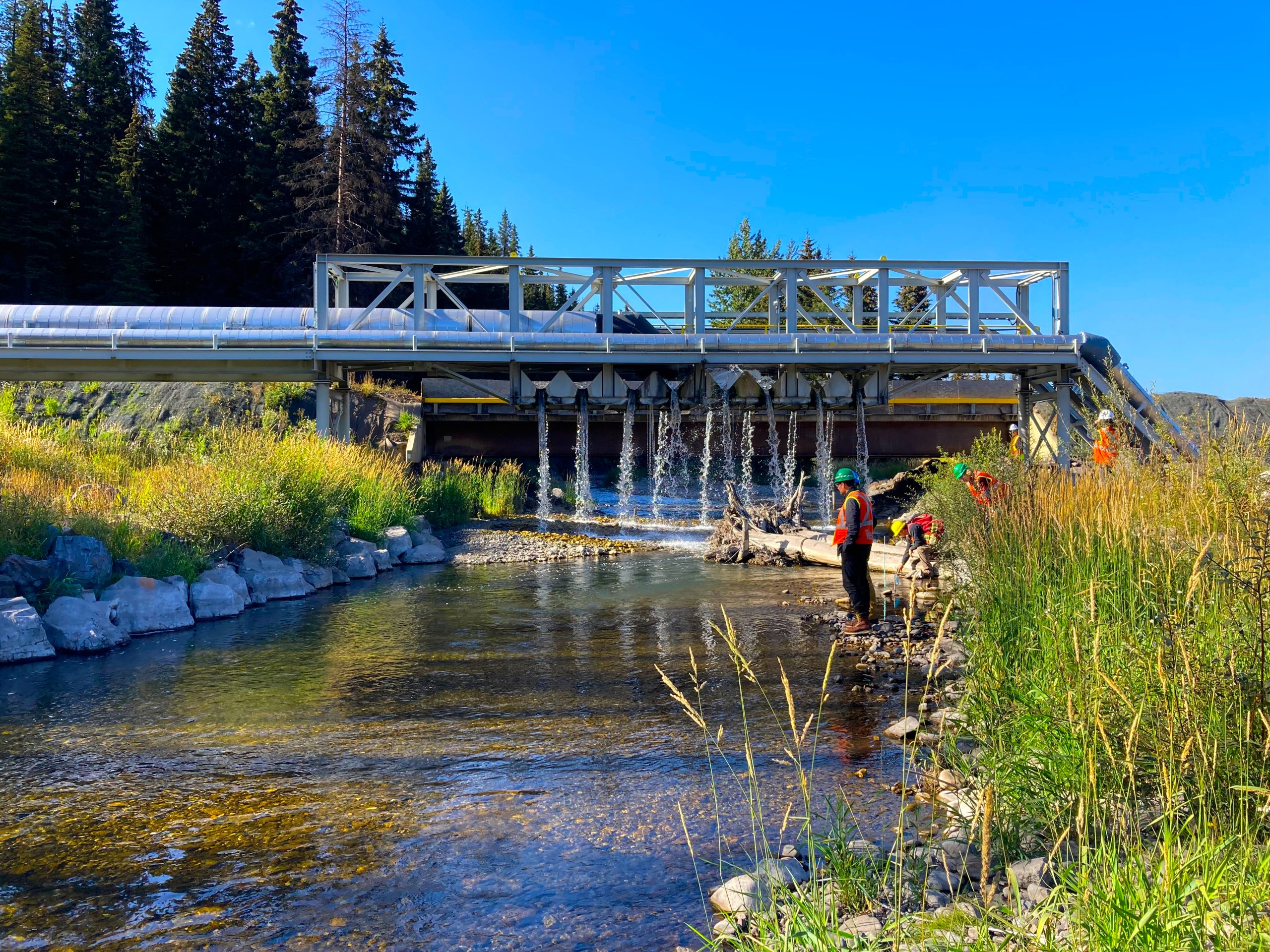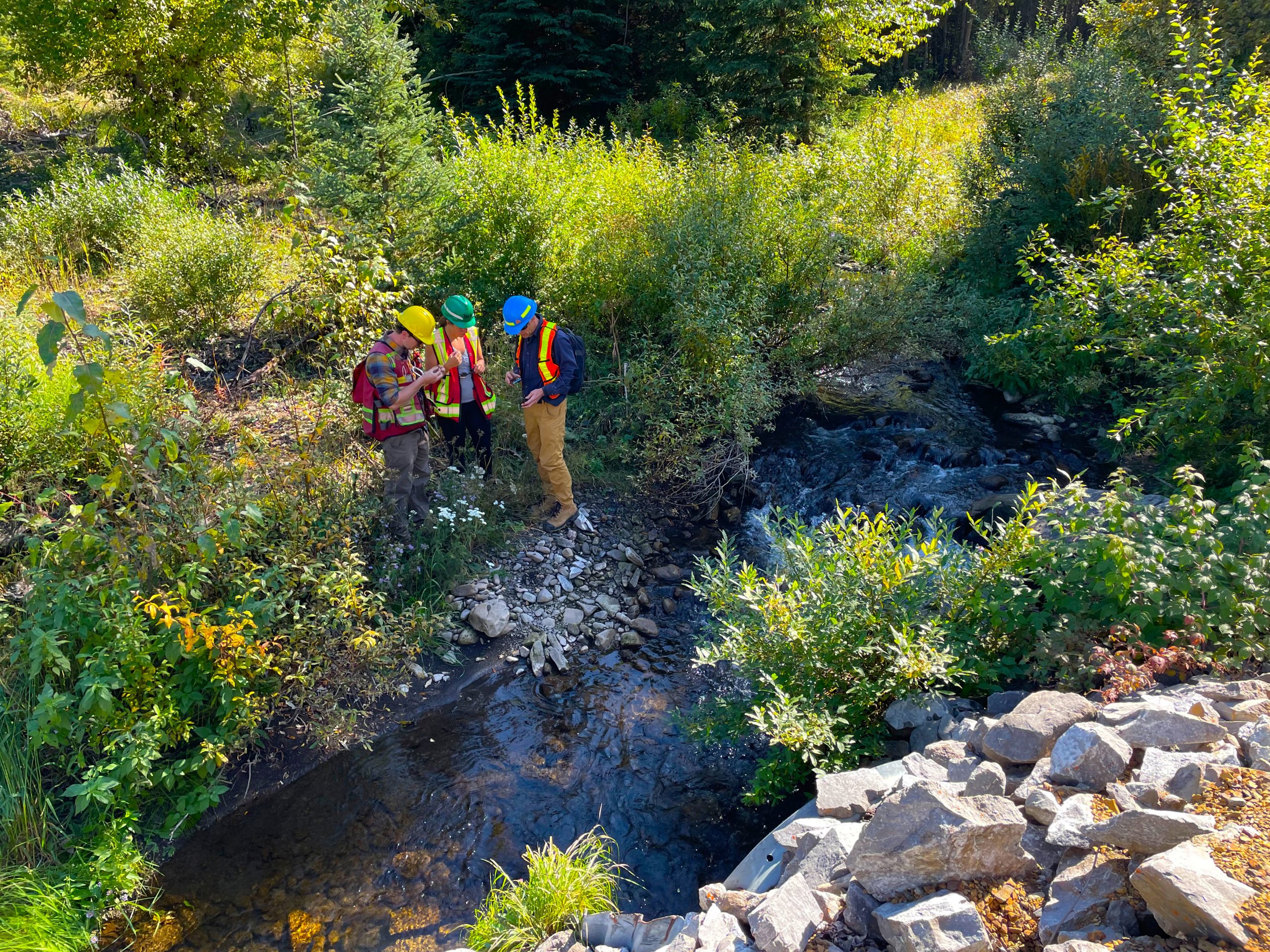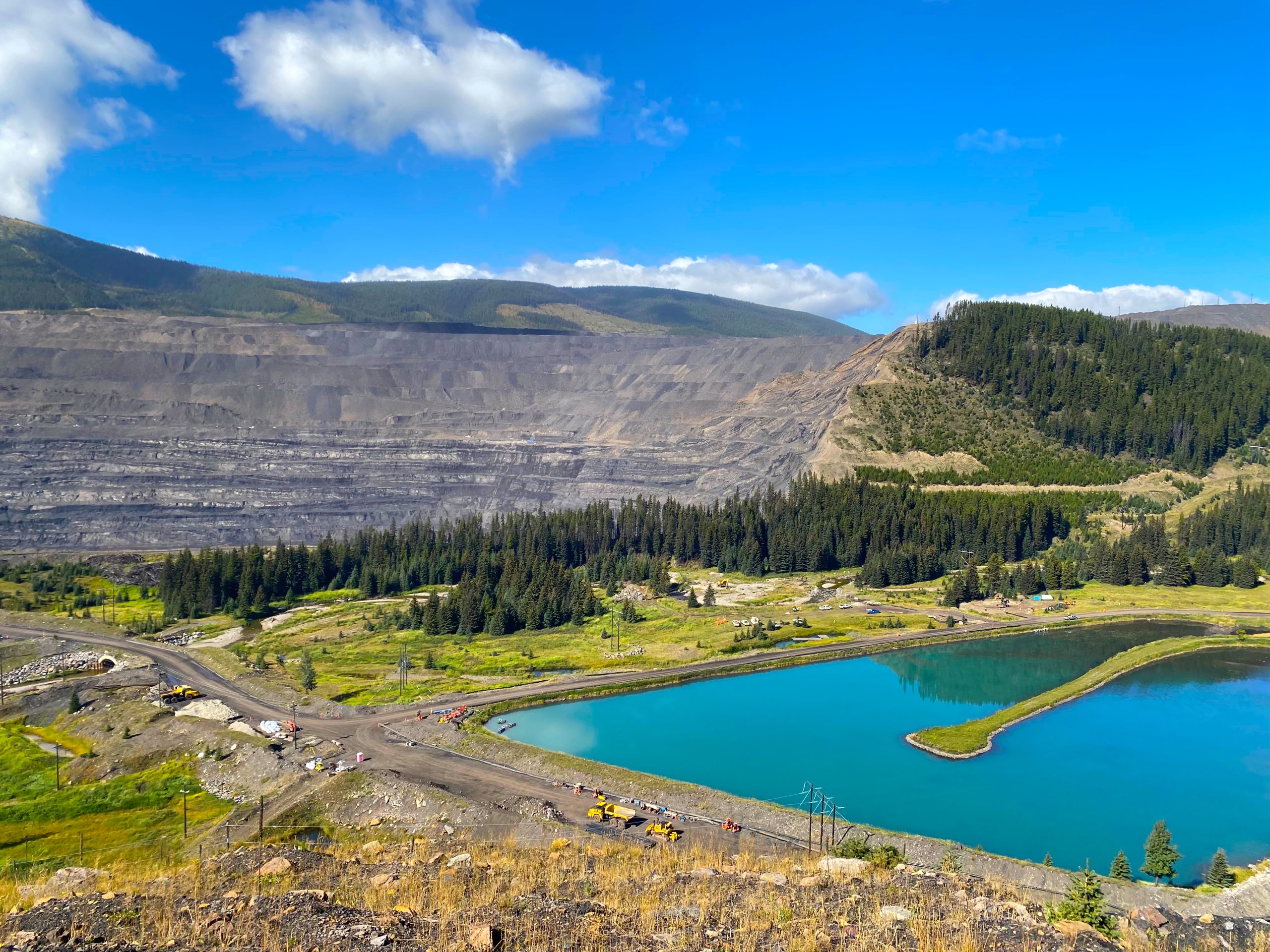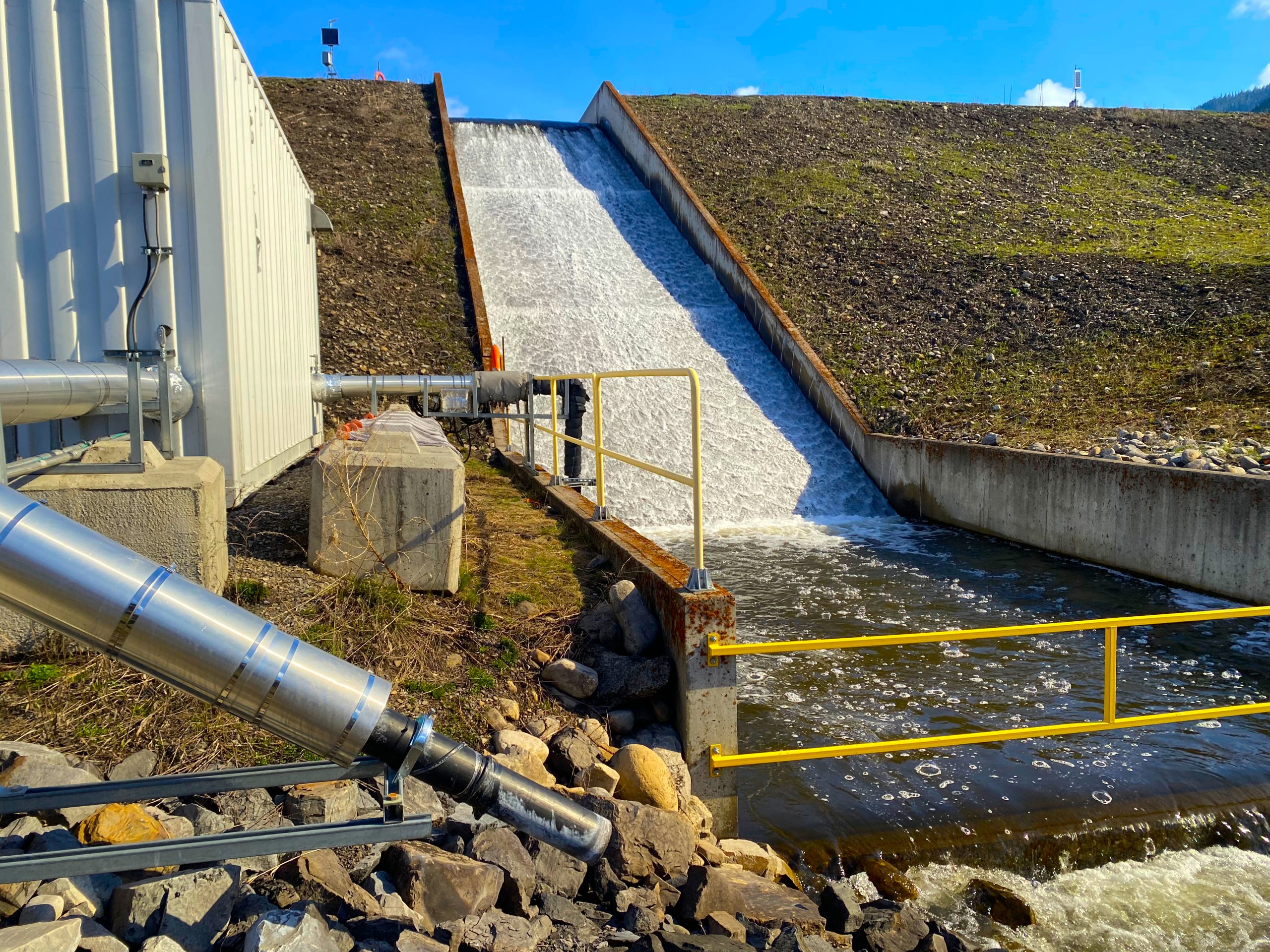Updated June 2025
On this page
Selenium concentrations at a glance
| Water quality | Concentrations met the water quality target, except in the month of April 2023. |
| Sediment quality | Selenium in sediment was generally below the B.C. guideline; concentrations were slightly elevated downstream of the Elk River, compared to other areas. |
| Zooplankton and aquatic insect tissue | Zooplankton tissue was below the B.C. guideline, whereas aquatic insect tissue exceeded the B.C. guideline. |
| Fish muscle tissue | Fish muscle tissue was below the B.C. guideline in 2023, and has remained within the same range for the last 10 years. |
| Fish egg/ovary tissue | Selenium levels in egg/ovary tissue were consistent with previous years and below thresholds of concern. |
Background information
The transboundary Koocanusa Reservoir, located in southeastern B.C., was formed when the Libby Dam was constructed on the Kootenay (Kootenai) River in Montana. Over one hundred years of coal mining in the Elk Valley region has led to higher levels of substances, including selenium (Se), in the Elk River and Koocanusa Reservoir.
The information provided in this summary is focused only on selenium and is a subset of what is available. More detailed analyses and data are available in the Elk Valley Resources (EVR) Koocanusa Reservoir Monitoring Program Annual Data Summary Report – 2023
Aquatic ecosystem monitoring
To understand the ecosystem in Koocanusa Reservoir, the B.C. government requires EVR to sample:
- Water quality
- Sediment quality from the bottom of the reservoir
- Zooplankton and aquatic insects tissue selenium concentration and community composition
- Fish health and tissue selenium concentration
Of particular interest is whether selenium measured in the reservoir water affects fish species. Ten species of fish are regularly sampled for selenium in muscle tissue and two species are regularly sampled for selenium in egg/ovary tissue. Muscle tissue can be collected from many different fish species non-lethally, while egg/ovary collection requires lethal sampling.
Egg/ovary tissue is the most direct predictor of potential reproductive effects in fish. Where possible it is desirable to sample egg/ovary tissue, despite sampling being lethal. In recognition of the importance and value of certain species, such as sport fish or fish populations that are small, lethal sampling programs may be carried out on a surrogate species. Results are then used to estimate risks to other species. In Koocanusa Reservoir, Redside Shiner and Peamouth Chub are regularly sampled for egg/ovary tissue.
Water quality monitoring
The B.C. government requires EVR to monitor water quality at five locations in the Canadian portion of Koocanusa Reservoir:
- Koocanusa Reservoir Downstream of the Elk River (Order Station)
- Koocanusa Reservoir Downstream of Kikkoman Creek
- Koocanusa Reservoir West of Grasmere
- Koocanusa Reservoir Upstream of Gold Creek
- Koocanusa Reservoir Upstream of Canada/US Border
Results collected from the Order Station are important because the station:
- Is located directly downstream from the Elk River
- Has a selenium target established in the Elk Valley Water Quality Plan (EVWQP) of 2 µg/L, which is the B.C. water quality guideline for the protection of aquatic health.
Water Quality data for selenium, sulphate and nitrate can be viewed on the Water Quality Dashboard for the Order Station and other locations in the Elk River. Data is available for download from the Environmental Monitoring System (EMS) Database.
Interpreting results
When using or interpreting selenium and other water quality results from Koocanusa Reservoir, systemic factors such as seasonality and reservoir management must be considered.
In Koocanusa Reservoir, water quality varies throughout the year and over time due to several factors, including:
- The amount of the substances in the Elk River
- The flow rate in the Elk and Kootenay rivers
- Water levels and flows within the reservoir, as determined by Libby Dam operations
Late winter and early spring
Selenium in the reservoir is typically highest during this low flow time, consistent with what is measured elsewhere in the Elk Valley.
Late spring
Selenium in the reservoir is typically lower during and after the snowmelt (freshet) when river flows and reservoir levels are high, and substances are more diluted.
All monitoring locations in Koocanusa Reservoir, even those far away from the dam, can be influenced by fluctuations in the reservoir level:
- At certain times of the year, when water levels are low, the reservoir is narrow and flows like a river. Scientists have identified that even at the Order Station, which is approximately 3 km downstream from the Elk River inflow, waters from the Elk and Kootenay rivers are not fully mixed.
- At other times of the year, when the reservoir is full, it resembles a lake and there is more effective mixing of the Elk and Kootenay rivers.
- When the reservoir is lake-like, more water is available for dilution and substance concentrations are lower.

Koocanusa Reservoir when water levels are low.

Koocanusa Reservoir when water levels are high.
Water sampling methods in the reservoir now account for these changing conditions and try to address the possibility of incomplete mixing. Water samples are collected from multiple depths and multiple points across the reservoir (east-west transects) at each location.
The approach of sampling at multiple points across the reservoir in a line (transect) is relatively new and provides a more accurate estimate of the selenium exposure to aquatic life in the reservoir.
Recent data summarized on the Water Quality Dashboard accounts for multiple samples collected along a transect and at depth. Individual sample results from the EMS Database must be properly assessed before comparisons are made or conclusions are reached.
2023 Data highlights
Water quality
Water quality results collected in 2023 varied seasonally, similar to previous years (see figure below). Monthly selenium levels were below the water quality target over the year, with just a single monthly exceedance in April, when the reservoir level was lowest. Other water quality parameters such as nitrate did not exceed guidelines. The figure below shows selenium concentrations at two monitoring locations in Koocanusa Reservoir, Downstream of the Elk River (Order Station) and Upstream of the Canada/U.S. Border. Prior to 2023, concentrations at the Border station were increasing but were typically below the target level.

Source: Data downloaded from the Environmental Monitoring System (EMS) Database
Sediment quality
Sediment downstream of the Elk River had significantly higher concentrations of selenium compared to upstream of the Elk River. Sediment selenium concentrations were below the B.C. Sediment Quality Guideline of 2 mg/kg, except for 2 sampling events in 2021.

Sediment selenium concentrations upstream and downstream of the Elk River. Red line indicates the B.C. sediment concentration for the protection of aquatic life. Data source: EVR Koocanusa Reservoir Data Synthesis Report – 2024 Update
Zooplankton and aquatic insect tissue
In 2023, zooplankton and aquatic insect tissue samples were collected upstream and downstream of the Elk River.
Zooplankton tissue selenium concentrations were:
- Below the B.C. guideline in all samples
- Higher downstream of the Elk River compared to upstream
- Comparable to previous sampling results
Aquatic insect tissue selenium concentrations were:
- Lower in the summer compared to the spring
- Higher downstream of the Elk River compared to upstream
- The lowest in August since 2020
Interestingly, concentrations of selenium in aquatic insect tissue collected both upstream and downstream of the Elk River in April and August 2023 were above the B.C. guideline, except for 1 sample collected in August upstream of the Elk River.
Fish muscle tissue
In 2023, different capture methods were used to minimize harm to non-target fish; these were not as successful as previous years, resulting in smaller sample sizes.
Selenium in muscle tissue of all fish species was below B.C. guidelines to protect fish health and humans eating a diet high in fish. Some spatial comparisons were completed when sufficient species data was available. Selenium in muscle tissue of Peamouth Chub was significantly higher in fish sampled in Koocanusa Reservoir downstream of the Elk River compared to those sampled upstream, however it still met applicable guidelines and the difference is not considered ecologically significant. The sampling results from 2023 were within the range of previous years’ results (2012 – 2022), indicating no trend in muscle tissue selenium over time. This figure shows the concentration of selenium in muscle tissue from all fish species collected in Koocanusa Reservoir over the last 10+ years.

Red line indicates the B.C. muscle tissue guideline for the protection of fish. Green line indicates the B.C. screening value protective of humans with a high fish diet (7.3 mg/kg dry weight). Data Source: EVR Koocanusa Reservoir Data Synthesis Report – 2024 Update
Fish egg/ovary tissue
Detailed research in the Koocanusa Reservoir has improved understanding of the importance sampling at the right time when assessing egg/ovary selenium concentration. Studies have shown that egg selenium concentrations are highly sensitive to the stage of egg maturity. If sampling occurs during the wrong time in the egg maturation cycle, then selenium-related effects may be under, or over predicted. This learning has been applied to ongoing monitoring and research to ensure data collected in EVR’s required monitoring programs is representative of actual risks.
In previous years, sampling found that egg/ovary tissue selenium levels were higher in Redside Shiner and Peamouth Chub than other fish species. Work is ongoing to understand how sensitive these species are to selenium, and if reproductive impacts may be occurring. To accurately assess potential reproductive effects, ripe ovary tissue is required to compare to guidelines. In 2023, few fish were caught with ripe ovaries, so the results couldn’t be directly compared to applicable guidelines. The average concentrations of selenium in ovary tissue in 2023 appeared to be within or below the ranges from previous years for both species, suggesting effects to populations of Redside Shiner and Peamouth Chub resulting from selenium exposure in the reservoir are unlikely.
Human health
Risks to human health from activities in Koocanusa Reservoir were assessed as part of the Elk Valley Human Health Risk Assessment. More information can be found in the Human Health Annual Update.


